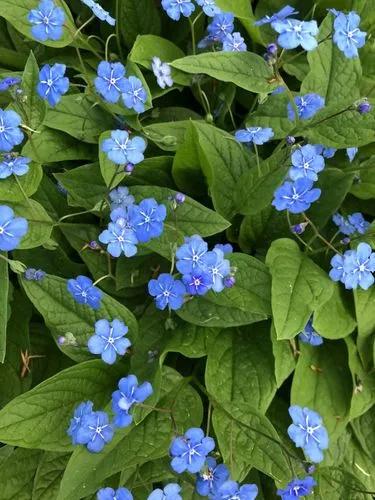Petunia violacea, also known as Violet-flowered petunia, Wild Petunia, and "Violet in Profusion" Petunia, is a native to South America, this variety is one of the parents to all hybrid Petunias. Grown from flower seeds, it is a tender perennial.
Violet-flower Petunia Care
Petunia violacea
Other names: Petunia Violacea, Violet-flowered Petunia, "violet In Profusion" Petunia, Violetflowered Petunia



Petunia violacea is a species of petunia with a lax sprawing habit, spreading outward rather than upwards. Flowers are only 2-inches wide, fragrant, violet-colored and cover the plants all summer long. It's an excellent choice for the front of the border or spilling over the edge of a container. Petunia violacea is a parent to many of the hybrids on the market today. It is a tough plant and has great heat tolerance for a petunia.
How to Care for the Plant

Water

As a general rule, water petunias once a week with a thorough watering to promote healthy roots. Petunias prefer soil that is evenly moist, yet well draining as damp soil causes root rot. Wait until a top inch of soil (2 cm) feels only slightly moist before watering petunias again with a generous soak.

Pruning

Just remove dead leaves and stems.

Fertilizer

Simply apply the fertilizer around the base of the plant, extending to the drip line. For vegetables, place the fertilizer in a strip parallel to the planting row. Water-soluble fertilizers are faster acting but must be applied more frequently. This method gives plants food while you water.

Sunlight

Less sun naturally means less growth.

Soil

Avoid using heavy soil. It may be too compacted for your potted plant and won't allow air to get to the roots.

Temperature

These plants can be grown as perennials in the areas with the lowest winter temperature of -3.9°C (25°F). In other regions, they are grown as annuals and planted after the last spring frost.

Container

When choosing a pot, choose a pot that is 2.5-5 cm (1-2”) larger than the current size. Ceramic pots are porous which means your plants are less likely to experience root rot from overwatering. It also means you'll have to water more often. Plastic pots are lighter, less likely to break, and easier to clean.

Popularity

4,381 people already have this plant 944 people have added this plant to their wishlists
Discover more plants with the list below
Popular articles






